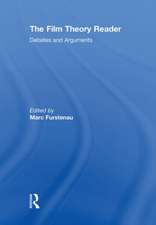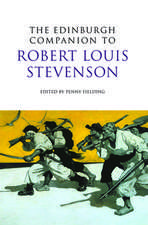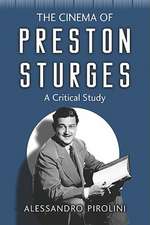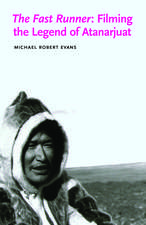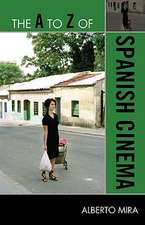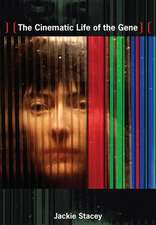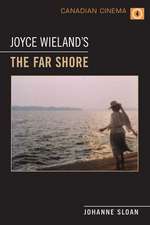The Sounds of Early Cinema
Autor Richard Abel, Charles (rick) Altmanen Limba Engleză Paperback – 2 oct 2001
As the book's contributors attest, this diversity requires a multiplicity of theoretical and methodological perspectives. Some argue that we can draw lessons from historians of prior or contemporaneous cultural forms and practices that deployed sound, such as staged dramas, vaudeville programs, magic lantern shows, popular song sheet music, and phonographic cylinders and records. Others insist that we pay attention to the insights of theorists and historians of mass culture about the cultural, social, and ideological expectations of the new audiences for entertainment at the turn of the last century, especially within a framework of heightened nationalism. Still others suggest that we explore more specific questions and issues: for instance, sound cues as a neglected historical determinant in the development of film as a story-telling medium, the "reality effect" or "dreamwork" of sound in the synesthetic experience of "cheap amusements," the relative appeal and value of effects, music, and dialogue as an accompaniment to films. If all in their own way demonstrate yet again thedistinctive otherness of early cinema, they also compound early cinema's configuration as an unusually complex hybrid medium-in what several productively describe as a unique historical moment of intense intermediality.
Selected from among nearly fifty papers presented at the Fifth International Domitor conference (hosted by the Motion Picture Division of the Library of Congress in early June 1998), these twenty-five essays cover a broad range of subjects: general theory as applied to film sound, sound practices in production, sound-related exhibition practices (in moving picture shows as well as in other similar cultural venues), film music, and the politics of sound reception. Together they argue that in order to understand cinema's emergence, especially as a cultural practice at the turn of the last century, we have to recognise that the experience of sound and hearing was no less significant than that of images and seeing. Six of the essays were originally presented in French. These have been translated, and the original French texts are included as appendices.
Authors include Richard Abel, Rick Altman, Edouard Arnoldy, Mats Björkin, Stephen Bottomore, Marta Braun, Jean Châteauvert, Ian Christie, Richard Crangle, John Fullerton, Jane Gaines, André Gaudreault, Tom Gunning, François Jost, Charlie Keil, Jeff Klenotic, Germain Lacasse, Neil Lerner, Patrick Loughney, David Mayer, Helen Day-Mayer, Dominique Nasta, Bernard Perron, Jacques Polet, Lauren Rabinovitz, Isabelle Raynauld, Herbert Reynolds, Gregory A. Waller, and Rashit M. Yangirov.
Preț: 214.77 lei
Nou
Puncte Express: 322
Preț estimativ în valută:
41.10€ • 43.02$ • 34.21£
41.10€ • 43.02$ • 34.21£
Carte tipărită la comandă
Livrare economică 31 martie-14 aprilie
Preluare comenzi: 021 569.72.76
Specificații
ISBN-13: 9780253214799
ISBN-10: 0253214793
Pagini: 344
Ilustrații: 55 b&w photographs
Dimensiuni: 164 x 233 x 19 mm
Greutate: 0.54 kg
Editura: MH – Indiana University Press
Locul publicării:United States
ISBN-10: 0253214793
Pagini: 344
Ilustrații: 55 b&w photographs
Dimensiuni: 164 x 233 x 19 mm
Greutate: 0.54 kg
Editura: MH – Indiana University Press
Locul publicării:United States
Cuprins
Contents
Introduction, Richard Abel and Rick Altman
I. A Context of Intermediality
1. Ian Christie, "Early Phonograph Culture and Moving Pictures"
2. Tom Gunning, "Doing for the Eye What the Phonograph Does for the Ear"
3. Mats Bjorkin, "Remarks on Writing and Technologies of Sound in Early Cinema"
4. Richard Crangle, "'Next Slide Please': The Lantern Lecture in Britain, 1890-1910"
5. François Jost, "The Ways of Silence"
6. Edouard Arnoldy, "The Event and the Series: The Decline of Café-Concerts, the Failure of Gaumont's Chronphone and the Birth of Cinema as Art"
II. Sound Practices in Production
7. Isabelle Raynauld, "Dialogues in Silent Screenplays: What the Actors Really Said"
8. Bernard Perron, "The First Transi-Sounds of Parallel Editing"
9. John Fullerton, "Sound, the Jump Cut, and 'Trickality' in Early Danish Comedies"
10. Dominique Nasta, "Setting the Pace of a Heartbeat: The Use of Sound Elements in European Melodramas Before 1915"
11. Rashit Yangirov, "Talking Movie or Silent Theater: Creative Experiments by Vasily Goncharov"
III. Sound Practices in Exhibition
12. Gregory Waller, "Sleighbells and Moving Pictures: On the Trail of D. W. Robertson"
13. Stephen Bottomore, "The Story of Percy Peashaker: Debates about Sound Effects in the Early Cinema"
14. Richard Abel, "That Most American of Attractions, the Illustrated Song"
15. Jeffrey Klenotic, "'The Sensational Acme of Realism': 'Talker' Pictures as Early Cinema Sound Practice"
16. Lauren Rabinovitz, "'Bells and Whistles': The Sound of Meaning in Train Travel Film Rides"
IV. Spectators and Politics
17. Jean Châteauvert and André Gaudreault, "The Noises of Spectators, or the Spectator as Additive to the Spectacle"
18. Jacques Polet, "Early Cinematographic Spectacles: The Role of Sound Accompaniment in the Reception of Moving Images"
19. Marta Braun and Charlie Keil, "Sounding Canadian: Early Sound Practices and Nationalism in Toronto-Based Exhibition"
20. Germain Lacasse, "The Double Silence of the 'War To End All Wars'"
V. Film Music
21. Patrick Loughney, "Domitor Witnesses the First Complete Public Presentation of the [Dickson Experimental Sound Film] in the 20th Century"
22. David Mayer and Helen Day-Mayer, "A 'Secondary Action' or Musical Highlight? Melodic Interludes in Early Film Melodrama Reconsidered"
23. Rick Altman, "The Living Nickelodeon"
24. Herbert Reynolds, "The Record of Special Music Scores for Kalem Films"
25. Jane Gaines and Neil Lerner, "The Orchestration of Affect: Motif of Barbarism in Breil's The Birth of a Nation Score"
Appendix: Original French Texts
A. François Jost, "Les Voies du silence"
B. Edouard Arnoldy, "L'Evénement et le série: Le déclin du café-concert, l'échec du Chronophone Gaumont et la naissance de l'Art Cinématographique"
C. Bernard Perron, "Les transi-sons du cinéma des premiers temps"
D. André Gaudreault and Jean Châteauvert, "Les bruits des spectateurs"
E. Jacques Polet, "Le spectacle cinématographique des premiers temps: fonctions des accompagnements sonores dans la réception des images animées"
F. Germain Lacasse, "Le double silence de la 'dernière guerre'"
Index
Introduction, Richard Abel and Rick Altman
I. A Context of Intermediality
1. Ian Christie, "Early Phonograph Culture and Moving Pictures"
2. Tom Gunning, "Doing for the Eye What the Phonograph Does for the Ear"
3. Mats Bjorkin, "Remarks on Writing and Technologies of Sound in Early Cinema"
4. Richard Crangle, "'Next Slide Please': The Lantern Lecture in Britain, 1890-1910"
5. François Jost, "The Ways of Silence"
6. Edouard Arnoldy, "The Event and the Series: The Decline of Café-Concerts, the Failure of Gaumont's Chronphone and the Birth of Cinema as Art"
II. Sound Practices in Production
7. Isabelle Raynauld, "Dialogues in Silent Screenplays: What the Actors Really Said"
8. Bernard Perron, "The First Transi-Sounds of Parallel Editing"
9. John Fullerton, "Sound, the Jump Cut, and 'Trickality' in Early Danish Comedies"
10. Dominique Nasta, "Setting the Pace of a Heartbeat: The Use of Sound Elements in European Melodramas Before 1915"
11. Rashit Yangirov, "Talking Movie or Silent Theater: Creative Experiments by Vasily Goncharov"
III. Sound Practices in Exhibition
12. Gregory Waller, "Sleighbells and Moving Pictures: On the Trail of D. W. Robertson"
13. Stephen Bottomore, "The Story of Percy Peashaker: Debates about Sound Effects in the Early Cinema"
14. Richard Abel, "That Most American of Attractions, the Illustrated Song"
15. Jeffrey Klenotic, "'The Sensational Acme of Realism': 'Talker' Pictures as Early Cinema Sound Practice"
16. Lauren Rabinovitz, "'Bells and Whistles': The Sound of Meaning in Train Travel Film Rides"
IV. Spectators and Politics
17. Jean Châteauvert and André Gaudreault, "The Noises of Spectators, or the Spectator as Additive to the Spectacle"
18. Jacques Polet, "Early Cinematographic Spectacles: The Role of Sound Accompaniment in the Reception of Moving Images"
19. Marta Braun and Charlie Keil, "Sounding Canadian: Early Sound Practices and Nationalism in Toronto-Based Exhibition"
20. Germain Lacasse, "The Double Silence of the 'War To End All Wars'"
V. Film Music
21. Patrick Loughney, "Domitor Witnesses the First Complete Public Presentation of the [Dickson Experimental Sound Film] in the 20th Century"
22. David Mayer and Helen Day-Mayer, "A 'Secondary Action' or Musical Highlight? Melodic Interludes in Early Film Melodrama Reconsidered"
23. Rick Altman, "The Living Nickelodeon"
24. Herbert Reynolds, "The Record of Special Music Scores for Kalem Films"
25. Jane Gaines and Neil Lerner, "The Orchestration of Affect: Motif of Barbarism in Breil's The Birth of a Nation Score"
Appendix: Original French Texts
A. François Jost, "Les Voies du silence"
B. Edouard Arnoldy, "L'Evénement et le série: Le déclin du café-concert, l'échec du Chronophone Gaumont et la naissance de l'Art Cinématographique"
C. Bernard Perron, "Les transi-sons du cinéma des premiers temps"
D. André Gaudreault and Jean Châteauvert, "Les bruits des spectateurs"
E. Jacques Polet, "Le spectacle cinématographique des premiers temps: fonctions des accompagnements sonores dans la réception des images animées"
F. Germain Lacasse, "Le double silence de la 'dernière guerre'"
Index
Descriere
The first book to examine the variety of sounds that accompanied so-called "silent" cinema.




